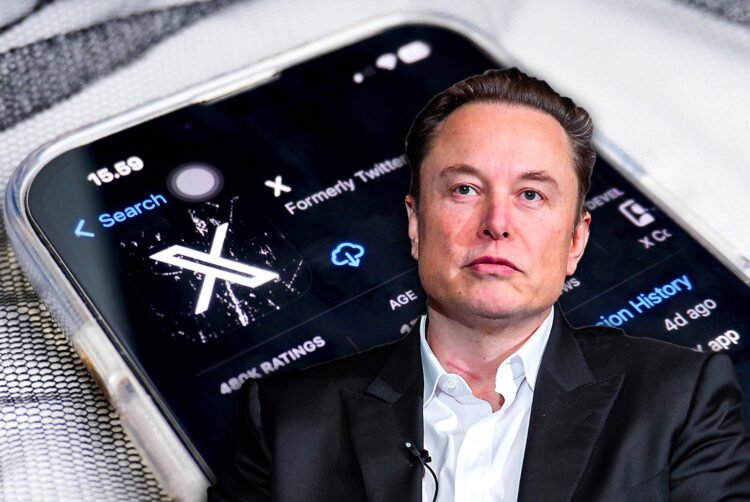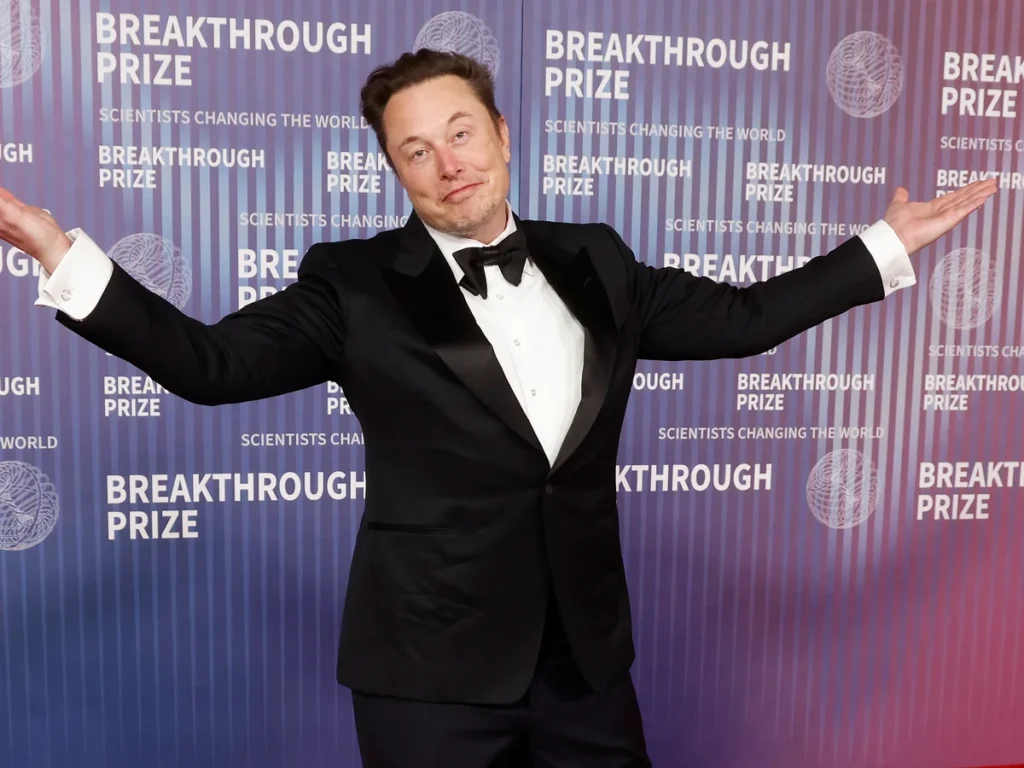Elon Musk Then and Now
Elon Musk Then
Elon Musk, born on June 28, 1971, in Pretoria, South Africa, emerged as a notable figure in technology and entrepreneurship from an early age.
The son of a South African father and a Canadian mother, Musk displayed an exceptional aptitude for computers and business.
At just 12 years old, he created a video game called “Blastar,” which he successfully sold to a computer magazine for approximately $500.
This early venture not only showcased his ingenuity but also hinted at the entrepreneurial spirit that would characterize his later endeavors.
In 1988, Musk made a pivotal decision that would shape his future. He obtained a Canadian passport, which allowed him to leave South Africa.
His departure was motivated by his strong opposition to the apartheid regime, which enforced racial segregation and discrimination.

Musk’s reluctance to support this system, particularly through compulsory military service, propelled him toward the United States, where he believed greater economic opportunities awaited.
This move would prove to be a significant turning point in his life, as it set the stage for his remarkable journey in the tech industry, leading to the founding of companies like Zip2, X.com (which later became PayPal), SpaceX, and Tesla.
Musk’s vision and drive have since transformed multiple industries, making him one of the most influential figures in modern technology and business.
Related Article: Jeff Bezos Then and Now
Elon Musk’s Business Career
PayPal and SpaceX
After beginning his higher education at Queen’s University in Kingston, Ontario, Elon Musk transferred to the University of Pennsylvania in 1992.
There, he pursued dual bachelor’s degrees in physics and economics, graduating in 1997.
Although he enrolled in graduate school at Stanford University to study physics, Musk left after only two days.
He recognized the burgeoning potential of the Internet to transform society far beyond traditional physics, signaling a pivotal shift in his focus toward technology and entrepreneurship.
In 1995, he founded Zip2, a groundbreaking company that provided online business directories and maps to newspapers, positioning himself at the forefront of the digital revolution.
Zip2’s success culminated in its acquisition by Compaq in 1999 for an impressive $307 million, which propelled Musk into the realm of online financial services.
With the proceeds from Zip2, Musk founded X.com, an online financial services platform that specializes in facilitating online money transfers.
This venture evolved into PayPal, a platform that revolutionized online commerce and digital payments.
In 2002, eBay acquired PayPal for $1.5 billion, solidifying Musk’s reputation as a successful entrepreneur and laying the groundwork for his future endeavors in the aerospace and automotive industries.
Musk’s vision extended beyond Earth, driven by his belief that humanity must become a multi-planetary species to ensure survival.
Dissatisfied with the high costs associated with rocket launches, he founded Space Exploration Technologies Corp.
(SpaceX) in 2002 to develop more affordable rockets. The company’s inaugural rocket, Falcon 1, was launched in 2006, followed by the more powerful Falcon 9 in 2010.
The Falcon Heavy, introduced in 2018, significantly enhanced launch capabilities, transporting up to 117,000 pounds (53,000 kg) to orbit at a fraction of the cost of its competitors.
SpaceX’s ambitious Super Heavy–Starship system, designed for deep space exploration, aims to carry 220,000 pounds to low Earth orbit and support missions to the Moon and Mars.
Under Musk’s leadership as CEO and chief designer, SpaceX has achieved numerous milestones, including the development of the Dragon spacecraft, which transports cargo and astronauts to the International Space Station (ISS).
Notably, in 2020, the crewed Dragon spacecraft successfully delivered astronauts Doug Hurley and Robert Behnken to the ISS. SpaceX is also contracted by NASA to create a lunar lander for its Artemis program, with a goal to return astronauts to the Moon by 2025.
Through his relentless innovation and ambitious vision, Musk has positioned SpaceX as a leader in aerospace technology, driving humanity toward a future among the stars.
Related Article: Tim Cook Then and Now
Tesla
Elon Musk’s fascination with electric vehicles took a significant turn when he became one of the primary investors in Tesla Motors (now simply Tesla) in 2004, a company initially founded by Martin Eberhard and Marc Tarpenning.
Recognizing the potential for electric cars to revolutionize the automotive industry, Musk sought to create vehicles that were not only environmentally friendly but also exciting and desirable.
In 2006, Tesla introduced the Roadster, a groundbreaking electric sports car that could travel 245 miles (394 km) on a single charge.
Unlike traditional electric vehicles, which Musk found to be uninspiring, the Roadster could accelerate from 0 to 60 miles per hour in less than four seconds, merging sustainability with high performance.
This marked a pivotal moment in the perception of electric vehicles, positioning Tesla as a leader in the market.
Following the Roadster, Tesla continued to innovate, with its initial public offering (IPO) in 2010 raising approximately $226 million, which further fueled the company’s growth.
In 2012, Tesla launched the Model S, a luxury sedan that received widespread acclaim for its design, range, and performance, earning numerous awards from automotive critics.
This success was followed by the Model X, a luxury SUV released in 2015, which further solidified Tesla’s reputation as a premium electric car manufacturer.
The introduction of the Model 3 in 2017 represented a shift towards more affordable electric vehicles, and it quickly became the best-selling electric car of all time, showcasing Musk’s commitment to making electric mobility accessible to a broader audience.
In addition to his work with Tesla, Musk’s vision for transportation extended beyond electric vehicles.
In 2013, dissatisfied with the projected $68 billion cost of California’s high-speed rail system, he proposed the Hyperloop, a revolutionary transportation concept involving a pneumatic tube system.
This system would enable pods carrying 28 passengers to travel the 350 miles (560 km) between Los Angeles and San Francisco in just 35 minutes at speeds reaching 760 miles per hour, nearly the speed of sound.
Musk estimated that the Hyperloop could be developed for only $6 billion, with pods departing every two minutes, potentially accommodating the six million passengers who travel that route annually.
However, Musk acknowledged that his commitments to SpaceX and Tesla prevented him from dedicating the necessary time to develop this ambitious project.
Despite this, the Hyperloop idea sparked significant interest and discussion within the transportation sector, inspiring various companies and teams to pursue its realization.
Musk’s visionary thinking in both electric vehicles and high-speed transportation reflects his broader goal of advancing sustainable technology and improving the quality of life through innovative solutions.
Related Article: Mark Zuckerberg Then and Now
X (formerly Twitter)

Elon Musk’s relationship with social media, particularly Twitter, has been complex and often controversial.
He joined Twitter in 2009, and by 2022, he had amassed over 85 million followers, becoming one of the platform’s most recognizable figures. Musk’s tweets often made headlines, reflecting his unique blend of humor and candidness.
However, his public statements also led to significant legal and financial repercussions, particularly concerning his views on Tesla’s status as a publicly traded company.
In August 2018, he tweeted about taking Tesla private at $420 a share, claiming he had “secured funding.”
This tweet, perceived as both a playful reference to cannabis culture and a serious declaration, prompted the U.S. Securities and Exchange Commission (SEC) to sue him for securities fraud.
The SEC alleged that Musk’s tweets were “false and misleading,” which resulted in a turbulent period for Tesla’s stock and ultimately led to a settlement that required Musk to step down as chairman for three years while still allowing him to serve as CEO.
This incident highlighted the profound impact that Musk’s social media presence can have on market dynamics and corporate governance.
Musk’s engagement with Twitter evolved significantly over the years, culminating in his attempt to acquire the platform in 2022.
His concerns about Twitter’s content moderation policies prompted him to purchase more than 9% of the company, initially agreeing to join the board.
However, he soon pivoted to making a full bid for Twitter at $54.20 a share, valuing the company at $44 billion.
Musk’s motivations included enhancing user experience, improving transparency by making algorithms open source, and combating spam bots.
Yet, after claiming Twitter had not provided sufficient information about bot accounts, he announced his withdrawal from the deal, citing a “material breach” of the purchase agreement.
This prompted Twitter’s board to take legal action to enforce the agreement.
Ultimately, the shareholders voted to accept Musk’s offer, and despite the legal challenges, he completed the acquisition in October 2022.
As the new owner, Musk implemented sweeping changes to Twitter, including significant layoffs—reducing the workforce by about half—and altering the verification process by allowing users to purchase blue check marks for $8 a month.
He disbanded Twitter’s content moderation team and reinstated previously banned accounts, including that of former President Donald Trump.
These actions sparked debate over free speech and the role of social media in public discourse.
Despite Musk’s ambitious plans for the platform, including rebranding it as “X” in July 2023, advertising revenue suffered as many companies withdrew their ads in response to the changes.
X Corp. aims to reshape the social media landscape, but the transition has highlighted the challenges of balancing innovation with user trust and platform integrity.
Musk’s influence on X underscores his broader vision of transforming communication in the digital age while navigating the complexities of ownership, regulation, and public expectations.
Related Article: Erick Rowan Then and Now
Elon Musk’s Wife and Children
Elon Musk’s personal life has been as dynamic and complex as his professional endeavors, marked by multiple marriages and high-profile relationships.
He was married to Canadian author Justine Wilson from 2000 to 2008, and together they have five sons.
Following his marriage to Wilson, Musk married actress Talulah Riley twice, first from 2010 to 2012 and then again from 2013 to 2016.
Musk’s relationships have also included notable figures such as actress Amber Heard and Canadian musician Grimes, with whom he shares two children: a son named X Æ A-Xii, born in May 2020, and a second child born via surrogate in December 2021.
This brings the total number of Musk’s children to ten, illustrating a personal life filled with both love and complexity.
However, Musk’s romantic life has not been without controversy. In July 2022, reports emerged of an affair between Musk and Nicole Shanahan, the wife of Google co-founder Sergey Brin, which reportedly began in December 2021.
This revelation led to Brin filing for divorce from Shanahan after four years of marriage, a painful twist considering that Brin had long been a supporter of Musk, having invested in several of Musk’s ventures, including being one of the earliest investors in Tesla.
This affair added a layer of drama to Musk’s personal narrative, illustrating how his relationships intersect with his professional world and the relationships he has cultivated with influential figures in the tech industry.
The incident reflects the complexities of Musk’s personal life, where his connections with friends and supporters can shift dramatically due to personal choices, often leading to significant repercussions in both his personal and professional spheres.
Related Article: Luke Harper Then and Now
Elon Musk Now

As of 2024, Elon Musk is a prominent 53-year-old businessman and investor, widely recognized for his transformative impact across multiple industries, particularly in space exploration and electric vehicles.
He is best known as the CEO and lead designer of SpaceX, a company he founded in 2002 with the goal of reducing the cost of space travel and making it possible for humanity to become a multi-planetary species.
Under his leadership, SpaceX has achieved significant milestones, including the development of the Falcon and Starship rockets, as well as the Dragon spacecraft, which has been instrumental in transporting cargo and astronauts to the International Space Station (ISS).
Musk’s vision extends beyond just exploration; he envisions a future where humans can establish colonies on Mars and other celestial bodies.
In addition to SpaceX, Musk is the CEO of Tesla, Inc., a company that has revolutionized the automotive industry with its production of electric vehicles (EVs).
Tesla’s models, such as the Model S, Model 3, Model X, and Model Y, have gained acclaim for their performance, design, and sustainability.
Musk’s push for widespread adoption of EVs has not only contributed to Tesla’s growth but also influenced other automakers to accelerate their electric vehicle initiatives.
As a leader in sustainable energy, Musk has also spearheaded the development of Tesla’s energy products, including solar panels and battery storage solutions, aiming to promote a cleaner, more sustainable future.
Musk’s influence extends into the tech and AI sectors as well. He is the founder of Neuralink, a neurotechnology company focused on developing brain-computer interfaces that could potentially aid individuals with neurological conditions and enhance human cognitive capabilities.
Furthermore, he founded The Boring Company, which focuses on infrastructure and tunneling to alleviate urban traffic congestion through innovative underground transportation solutions.
In 2023, Musk launched X.AI, a company aimed at directing the development of artificial intelligence, reflecting his ongoing commitment to shaping the future of technology responsibly.
Musk’s ventures culminated in his ownership of X Corp., the parent company of the social media platform X (formerly Twitter).
His acquisition of the platform in late 2022 aimed to enhance user experience and promote free speech while navigating the complexities of content moderation.
Musk’s influence in social media has made him a central figure in discussions about digital communication and its societal implications.
As of August 2024, Musk’s net worth is estimated at a staggering $247 billion, making him one of the wealthiest individuals globally.
His wealth is a testament to his success in entrepreneurship and innovation, driving advancements that impact daily life and the future of humanity.
Despite facing various controversies and challenges in his personal and professional life, Musk remains a pivotal figure in technology and business, continually pushing the boundaries of what is possible.
Related Article: Antonio Cesaro Then and Now
Elon Musk Net Worth
Elon Musk, a South African-born Canadian-American businessman, inventor, and investor, boasts a net worth of approximately $257.3 billion, underscoring his status as one of the wealthiest individuals in the world and reflecting his significant contributions to various industries, including aerospace, automotive, and technology.
FAQs
Elon Musk has invented and contributed to several groundbreaking technologies, including the electric sports car (Tesla Roadster), the reusable rocket (SpaceX Falcon), and the Hyperloop transportation concept. He has also been involved in creating Neuralink (brain-computer interface) and co-founded OpenAI.
Elon Musk has 11 children: Nevada Alexander Musk (deceased), Griffin Musk, Xavier Musk (now known as Vivian Jenna Wilson), Damian Musk, Saxon Musk, Kai Musk, X Æ A-Xii (nicknamed X), and two children via surrogate with Grimes: Exa Dark Sideræl Musk (nicknamed Y) and a second child.
As of now, Elon Musk is the CEO of Tesla, Inc.
Elon Musk is the founder and CEO of SpaceX, making him the owner of the company.
Currently, Elon Musk is focused on advancing technologies through his various companies, including SpaceX and Tesla, while also engaging in developments in artificial intelligence with X.AI.
Elon Musk’s lifestyle is known to be busy and intense, involving extensive work on his companies and projects. He has also been known to have a minimalist approach to living, reportedly residing in a small, prefabricated house near SpaceX’s headquarters.
As of now, Elon Musk has been romantically linked to several individuals, including Grimes, with whom he shares two children. His current relationship status may vary, as he has a history of high-profile relationships.
Elon Musk is generally in good health, but he has publicly discussed experiencing Asperger’s syndrome, a condition on the autism spectrum, which he mentioned during his appearance on “Saturday Night Live.”






























